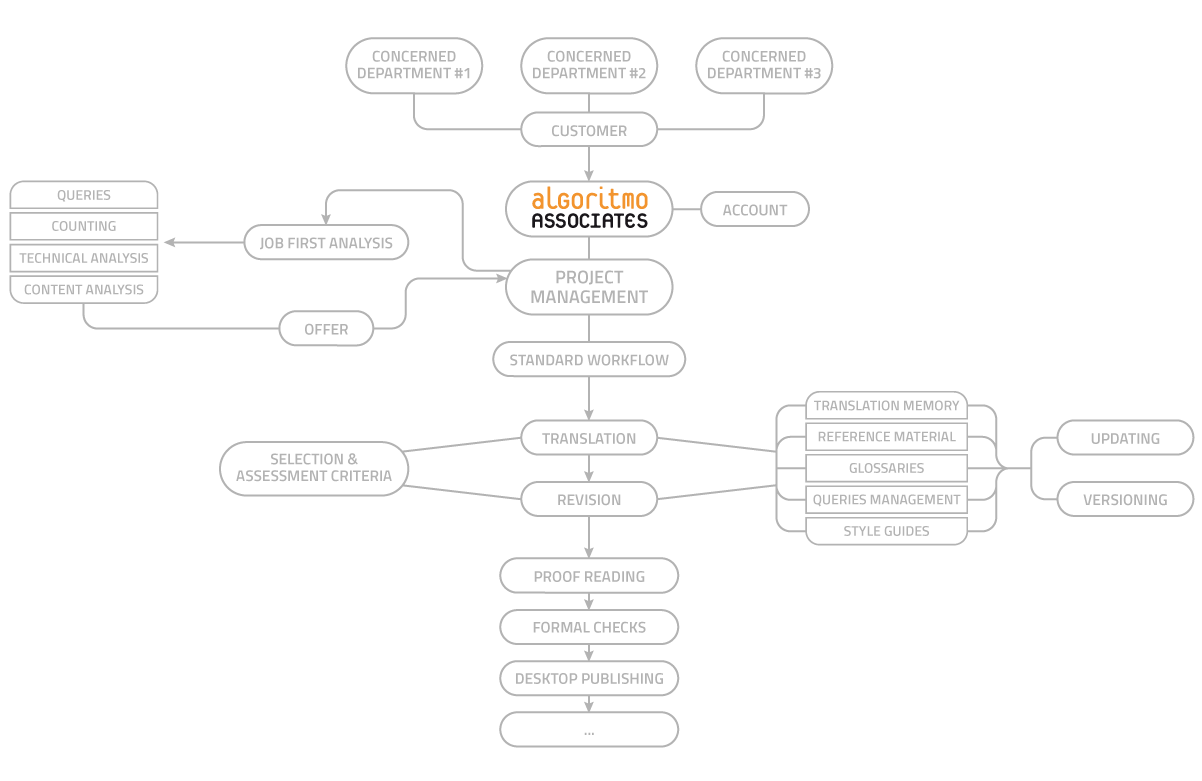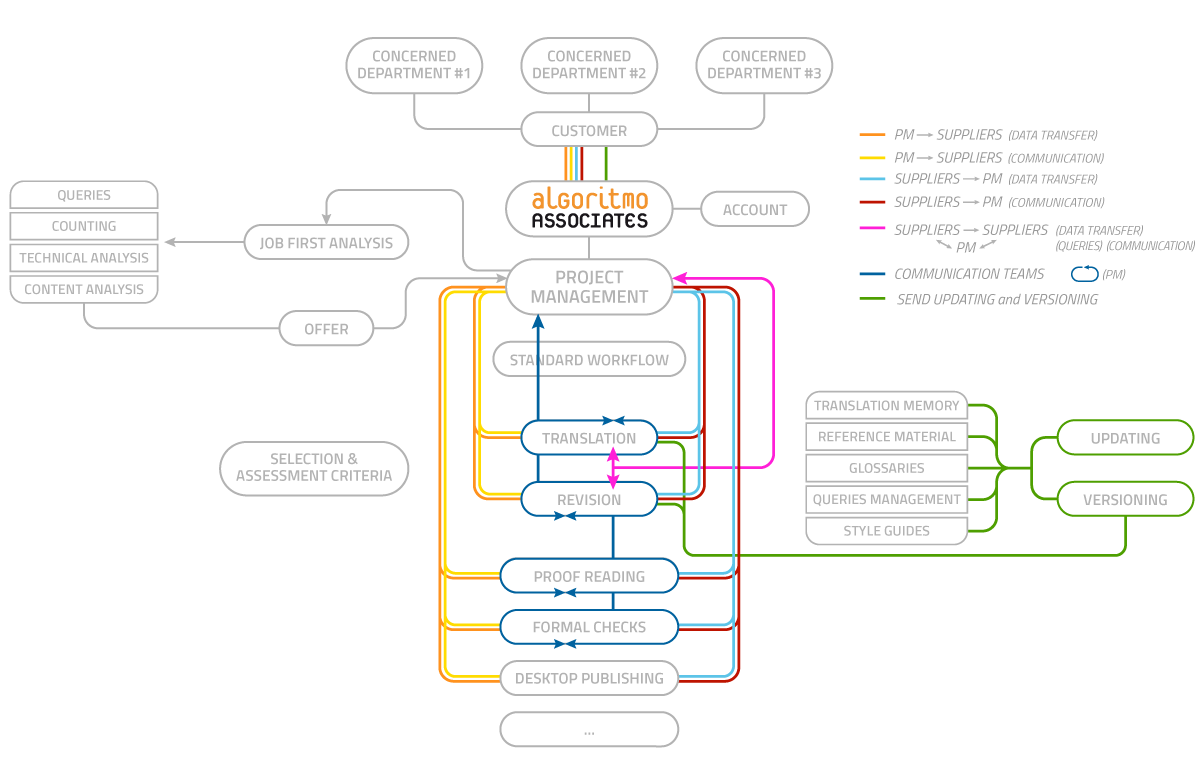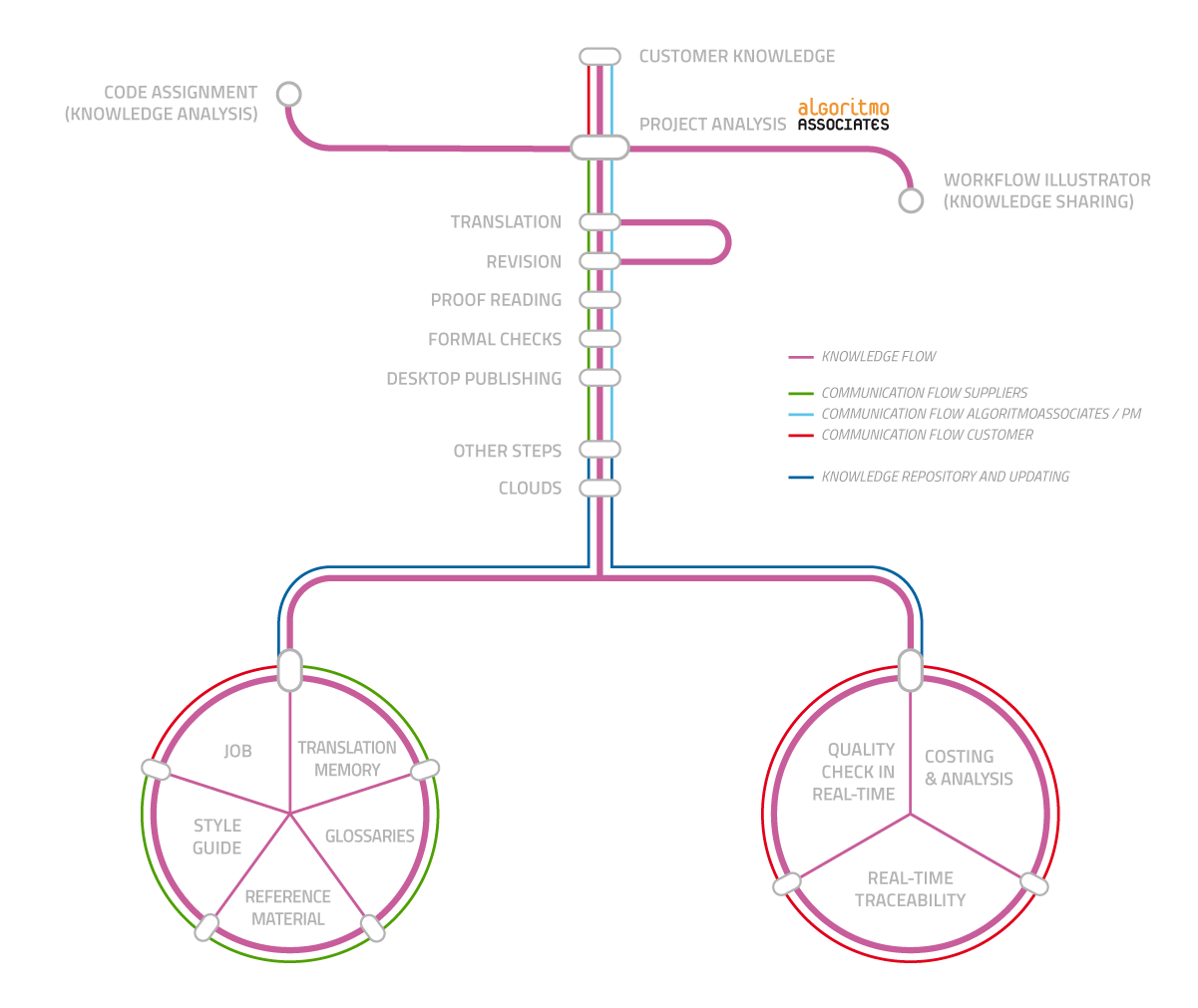Even the simplest translation process workflows involve a number of participants with different roles, large amounts of information (some of which is needed to do the work and some of which is superfluous) and, above all, the processing of different kinds of data (texts to translate, memories, glossaries, reference materials, queries etc.).
For example, let’s look at cognitive flows, i.e. those that transmit the initial ‘knowledge’ (documents and instructions) along the operating process right up to final delivery and storage.
- There are participants at various levels, with different responsibilities, but all of them are required to process knowledge in a single stream.
- The way in which the initial knowledge is processed informs how the operating process develops.
- We use different instruments to transmit and to process knowledge. These are interlinked to create the correct and most up-to-date knowledge output.
- There are cases in which some participants must transmit knowledge to other participants, but not to all of them (e.g. different skills centres must transfer knowledge to the supplier of translations, or the various translators to the reviewers, the project managers to different services providers and so on).
- There is knowledge that must be filed in order to be used in the next processing cycle.


